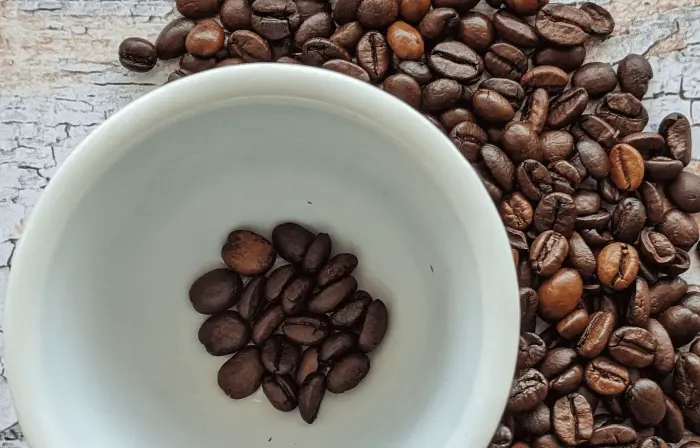Espresso is the foundation of many beloved coffee drinks, from cappuccinos to lattes. Making a perfect shot requires the right equipment, fresh beans, and precise technique. This guide will walk you through every step, ensuring you can brew rich, flavorful espresso at home like a professional barista.
Understanding Espresso
Espresso is a concentrated coffee beverage brewed by forcing hot water through finely-ground coffee under high pressure. The result is a small, intense shot with a layer of crema—a golden, creamy foam that sits on top. Unlike drip coffee, espresso has a thicker consistency and a more complex flavor profile.
The Importance of Fresh Coffee Beans
The quality of your espresso starts with the beans. Freshly roasted coffee beans, ideally used within two to four weeks of roasting, provide the best flavor. Look for beans labeled as “espresso roast,” though any high-quality coffee can work if ground correctly.
Choosing the Right Grind
Espresso requires a fine, consistent grind—almost like powdered sugar. If the grind is too coarse, water will pass through too quickly, resulting in a weak, under-extracted shot. If it’s too fine, the water will struggle to pass, leading to over-extraction and bitterness. A burr grinder is essential for achieving the right consistency.
Essential Espresso Equipment
To make espresso at home, you’ll need a few key tools. Investing in quality equipment will significantly improve your results.
Espresso Machine
There are several types of espresso machines:
Manual Lever Machines: Require skill and physical effort but offer full control.
Semi-Automatic Machines: The most common for home use, allowing manual grinding and tamping with automated water pressure.
Automatic Machines: Dose and extract automatically but offer less customization.
Super-Automatic Machines: Grind, tamp, and brew with the push of a button.
Even a basic machine can produce great espresso if used correctly.
Coffee Grinder
A high-quality burr grinder ensures uniform particle size, crucial for even extraction. Blade grinders are inconsistent and not suitable for espresso.
Tamper
A tamper compresses the coffee grounds evenly in the portafilter. A standard 58mm tamper fits most home machines.
Scale
Precision is key in espresso. A digital scale helps measure coffee and water accurately for consistent results.
Portafilter and Basket
The portafilter holds the coffee grounds, and the basket determines the dose. Non-pressurized baskets require proper technique, while pressurized baskets are more forgiving for beginners.
Step-by-Step Espresso Brewing Guide
Now that you have the right tools, let’s walk through the brewing process.
Step 1: Preheat Your Equipment
Before brewing, run hot water through the machine to warm the portafilter and cup. Cold equipment can lower extraction temperature, affecting flavor.
Step 2: Measure and Grind Your Coffee
For a single shot, use 7–9 grams of coffee; for a double, 14–18 grams. Grind the beans just before brewing to preserve freshness.
Step 3: Distribute and Tamp the Grounds
After dosing the portafilter, gently shake or use a distribution tool to level the grounds. Then, apply even pressure (about 30 pounds) with the tamper to create a flat, compact puck.
Step 4: Lock in the Portafilter and Start Brewing
Insert the portafilter into the machine and start the extraction immediately. A proper shot should take 25–30 seconds for a double espresso, yielding about 30–40ml of liquid.
Step 5: Monitor the Extraction
Watch the flow—it should start slow, thick, and dark, then gradually lighten to a honey-like consistency. If it’s too fast, the grind is too coarse; if too slow, it’s too fine.
Step 6: Stop at the Right Time
Once the desired volume is reached, stop the extraction to avoid over-extracting bitter flavors.
Troubleshooting Common Espresso Problems
Even experienced baristas encounter issues. Here’s how to fix common problems.
Espresso Tastes Sour
Sourness indicates under-extraction. Try a finer grind, higher water temperature, or longer extraction time.
Espresso Tastes Bitter
Bitterness means over-extraction. Use a coarser grind, lower temperature, or shorter brew time.
No Crema
Lack of crema suggests stale beans, incorrect grind size, or insufficient pressure. Ensure fresh beans and proper tamping.
Watery or Weak Espresso
If the shot is weak, the grind may be too coarse, or the dose too small. Adjust accordingly.
Advanced Techniques for Better Espresso
Once you’ve mastered the basics, experiment with these methods to refine your shots.
Adjusting Brew Ratio
The standard ratio is 1:2 (coffee to liquid), but you can tweak it. A 1:1.5 ratio yields a richer shot, while 1:2.5 is milder.
Temperature Profiling
Some machines allow temperature adjustments. Lower temps (90–92°C) highlight acidity, while higher (93–96°C) enhance body.
Pressure Profiling
Advanced machines let you control pressure. Starting low and increasing can improve extraction for certain beans.
Maintaining Your Espresso Machine
Regular cleaning ensures longevity and consistent quality.
Daily Cleaning
Backflush the machine with water after each use and wipe the portafilter and steam wand.
Weekly Maintenance
Deep-clean the group head and descale if your water is hard. Replace gaskets if they wear out.
Monthly Checks
Inspect seals, valves, and hoses for wear. Lubricate moving parts if needed.
Enjoying Your Espresso
Now that you’ve brewed the perfect shot, savor it as is or use it as a base for other drinks.
Drinking Espresso Straight
A well-made espresso has balanced sweetness, acidity, and bitterness. Sip it quickly to enjoy the flavors before they dissipate.
Making Milk-Based Drinks
Steam milk to create lattes, cappuccinos, or flat whites. The key is velvety microfoam.
Trying Espresso Variations
Experiment with ristretto (shorter shot) or lungo (longer shot) to explore different flavor profiles.
Conclusion
Making great espresso takes practice, but with the right tools and techniques, anyone can master it. Start with fresh beans, dial in your grind, and pay attention to extraction time. Soon, you’ll be pulling café-quality shots at home. Happy brewing!
Related topics:
How Many Grams of Coffee to Make Espresso?
How Was Espresso Made Before Machines?
What to Put in Espresso Martini?


